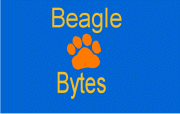This course is spread across three units :
Expressions and Formulae (E&F), Relationships (Rel) and Numeracy (Num)
An internal test is sat at the end of the course, with calculator and non-calculator papers.
BGE : S1,S2,S3 National 4 Applications
National 5 Maths
Expressions and Formulae (E& F)
E&F 1.2 : Applying geometric skills to circumference, area and volume.
E&F 1.3 : Applying statistical skills to representing and analysing data and to probability.
E&F 2.1: Interpreting a situation where mathematics can be used and identifying a strategy.
E&F 2.2: Explaining a solution and/or relating it to context.
Working with expressions and formulae
Key subskills:
Using the distributive law in an expression with a numerical common factor to produce a sum
of terms.
Factorising a sum of terms with a numerical common factor.
Simplifying an expression which has more than one variable.
Evaluating an expression or a formulae which has more than one variable.
Extending a straightforward number or diagrammatic pattern and determining its formula.
Calculating the gradient of a straight line from horizontal and vertical distances.
Circumference, area and volume
Key subskills:
Calculating the circumference and area of a circle
Calculating the area of a parallelogram, kite, trapezium
Investigating the surface of a prism
Calculating the volume of a prism
Using rotational symmetry
Analysing Data
Key subskills:
Constructing a frequency table with class intervals from raw data.
Determining statistics of a data set.
Interpreting calculated statistics.
Representing raw data in a pie chart.
Using probability.
Constructing a scattergraph
Drawing and applying a best- fitting straight line
Relationships (Rel)
Rel 1.2 : Applying geometric skills to sides and angles of shapes.
Rel 1.3 : Applying trigonometric skills to right-angled triangles.
Rel 1.4 : Applying statistical skills to representing data.
Rel 2.1: Interpreting a situation where mathematics can be used and identifying a strategy.
Rel 2.2: Explaining a solution and/or relating it to context.
Linear Relationships
Key subskills:
Drawing and recognising a graph of a linear equation.
Solving linear equations.
Changing the subject of a formula.
Applying geometric skills
Key subskills:
Using Pythagoras’ theorem.
Using a fractional scale factor to enlarge or reduce a shape.
Using parallel lines, symmetry and circle properties to calculate angles.
Applying trigonometric skills
Key subskills:
Calculating a side in a right-angled triangle
Calculating an angle in a right- angled triangle
Numeracy (Num)
Num 1.1
: Selecting and using appropriate numerical notation and units.
Num 1.2: Selecting and carrying out calculations.
Num 1.3
: Reading measurements using a straightforward scale on an
instrument.
Num 1.4
: Interpreting the measurements and the results of calculations to make decisions.
Num 1.5
: Explaining decisions based on the results of measurements or calculations.
Num 2.1: Extracting and interpretation data from at least two different straightforward graphical forms.
Num 2.2: Making and explaining decisions based on the interpretation of data.
Num 2.3: Making and explaining decisions based on probability.
Calculations and Rounding
Key subskills:
Add and subtract whole numbers including negative numbers.
Multiply whole numbers of any size, with up to four-digit whole numbers.
Divide whole numbers of any size, by a single digit whole number or by 10 or 100.
Round answers to the nearest significant figure or two decimal places .
Use appropriate checking methods, eg check sums and estimation.
Interpret results of measurements involving time, length, weight, volume and temperature.
Give reasons for decisions based on the results of measurements or calculations.
Fractions, Percentages, Ratio
Key subskills:
Find simple percentages and fractions of shapes and quantities.
Calculate percentage increase and decrease.
Convert equivalences between common fractions, decimal fractions and percentages.
Calculate rate: eg miles per hour or number of texts per month.
Calculate ratio and direct proportion.
Give reasons for decisions based on the results of measurements or calculations.
Distance, Speed and Time
Key subskills:
Calculate distance given speed and time.
Calculate time intervals using the 12- and 24-hour clock.
Measurements, Perimeter, Area and Volume
Key subskills:
Use measuring instruments with straightforward scales to measure length, weight, volume and temperature.
Read scales to the nearest marked, unnumbered division with a functional degree of accuracy.
Calculate volume (cube and cuboid), area (rectangle and square) and perimeter (shapes with straight lines).
Recognise the inter-relationship between units in the same family, eg mm→cm, cm→m, g→kg, and ml→l
Use vocabulary associated with measurement to make comparisons for length, weight, volume and temperature.
Give reasons for decisions based on the results of measurements or calculations.
Books
A selection of resources available at Amazon
MM Amazon Store UK school subjects Maths Mutt Publications
As an Amazon Associate I earn from qualifying purchases.
